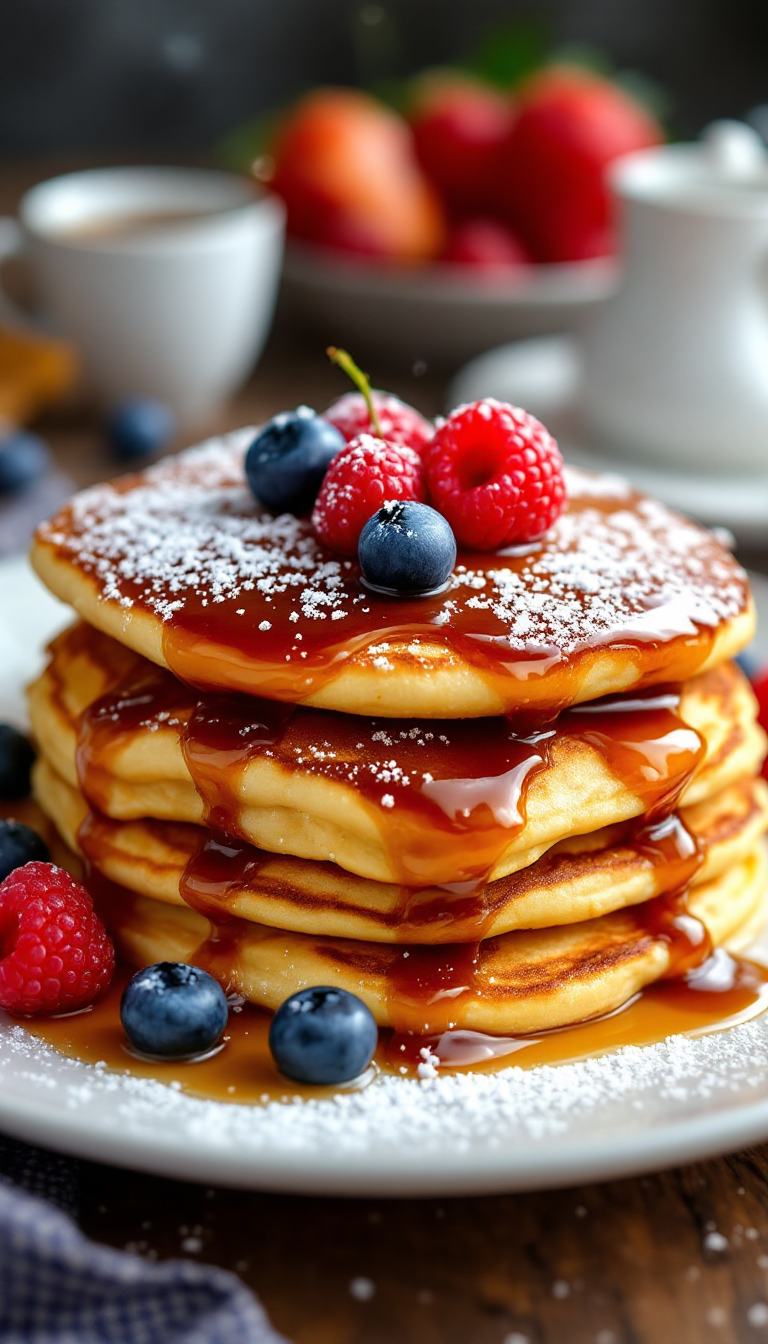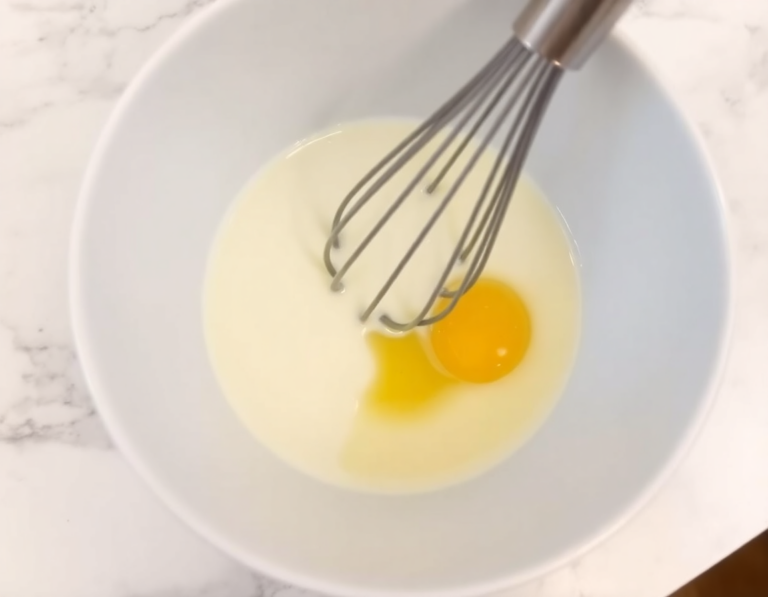
Ah, pancakes—a breakfast staple that never fails to bring a smile. Imagine waking up on a lazy Sunday morning, the sun peeking through your curtains, and the aroma of these delightfully fluffy pancakes wafting through your home. They’re like little clouds of joy on your plate, ready to be drowned in maple syrup or topped with a dollop of cream.
Steps
- Preheat your oven to 200°F (90°C) and have a heatproof platter ready to keep pancakes warm.
- In a small bowl, combine flour, sugar, baking powder, and salt. Set this mixture aside.
- In a medium bowl, whisk together milk, melted butter (or vegetable oil), and egg until well combined.
- Add the dry ingredients to the milk mixture, stirring gently until just combined. Avoid overmixing to maintain fluffiness.
- Heat a large skillet or griddle over medium heat and coat it generously with vegetable oil.
- For each pancake, drop 2 to 3 tablespoons of batter onto the skillet. Cook until bubbles form on the surface, about one minute, then flip and cook the other side for 1 to 2 minutes until golden brown.
- Transfer cooked pancakes to the heatproof platter, cover with foil, and keep warm in the oven until serving. Serve with your choice of toppings like maple syrup, fresh berries, or banana slices.

Ingredients
- 1 cup (120g) plain all-purpose flour
- 2 Tablespoons sugar
- 2 teaspoons baking powder
- 1 pinch of salt
- 1 cup (240 ml) milk (whole or 2% recommended)
- 2 Tablespoons melted unsalted butter or vegetable oil (such as canola or sunflower oil)
- 1 large egg
- Maple syrup
- Fresh berries (e.g., strawberries, raspberries, blueberries)
- Sliced bananas
- Chocolate chips
- Nut butter (peanut, cashew, or almond)
- Nuts (pecans, slivered almonds, walnuts)
Nutritional Values
Calories: 992 | Sugar: 36g | Fat: 38.4g | Saturated Fat: 10.4g | Carbohydrates: 136.8g | Fiber: 4g | Protein: 27.2g | Cholesterol: 208mg
FAQ
- Why aren’t my pancakes turning out fluffy?
- If your pancakes are not rising as expected, check the freshness of your baking powder. It might have lost its potency if it’s old or has been open for a while. Additionally, avoid overmixing the batter, which can lead to dense pancakes instead of fluffy ones.
- Can I use buttermilk instead of regular milk?
- Yes, you can substitute milk with buttermilk to achieve even more tender, moist, and delicate pancakes. Both homemade and store-bought buttermilk work well in this recipe.
- Is it possible to make a whole wheat version of these pancakes?
- Absolutely! You can replace all-purpose flour with whole wheat flour on a 1:1 basis. Alternatively, you might want to try a specific whole wheat pancake recipe for an even larger batch.
- How can I make these pancakes dairy-free?
- To make a dairy-free version, substitute melted butter with a neutral vegetable oil like canola or sunflower oil, and use a plant-based milk such as almond or oat milk in place of regular milk.
- Can I prepare a larger batch of pancakes for a bigger group?
- Certainly! For a family breakfast or larger gathering, you can easily double or triple the recipe. Use the scale in the recipe card to adjust the ingredient amounts accordingly.
Tips
- Ensure the baking powder is fresh and active, as this is essential for achieving the desired fluffiness in your pancakes.
- Avoid overmixing the batter once the dry ingredients are combined with the wet ones; mix just until you see no more dry flour, leaving some lumps in the batter to keep the pancakes light.
- Allow the batter to rest for a couple of minutes before cooking, which helps the baking powder activate and contributes to the pancakes’ rise.
- Cook the pancakes on low to medium heat for even cooking and to maintain their fluffiness, ensuring you don’t flip them until bubbles form and pop on the surface.
Equipment
- Electric griddle (optional, but recommended for even cooking)
- Nonstick skillet or frying pan
- Thin spatula for flipping pancakes
- Heatproof platter (for keeping pancakes warm in the oven)
